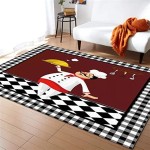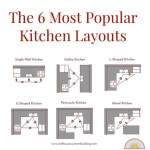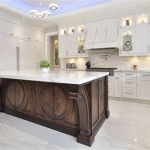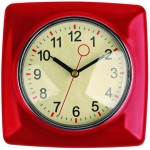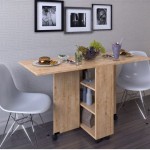What Color Cabinets Go Best In A Small Kitchen
Choosing the right cabinet color for a small kitchen is a pivotal decision that can significantly impact the perceived size, brightness, and overall aesthetic of the space. In smaller kitchens, every element contributes to the feeling of spaciousness or, conversely, claustrophobia. Cabinet color, due to its visual dominance, plays a central role in this dynamic. The optimal choice can make a cramped kitchen feel more open and inviting, while an ill-considered color can exacerbate feelings of confinement. Therefore, a thoughtful approach is essential to ensure the selection aligns with the specific dimensions, lighting conditions, and design goals for the kitchen.
The principles of color psychology and interior design offer valuable guidance in navigating this decision. Lighter colors, for example, tend to reflect more light, making spaces feel larger and airier. Conversely, darker colors absorb light, which can make a small kitchen feel even smaller and more enclosed. However, darker colors can also add depth and sophistication when used strategically. The key is to understand how different colors interact with light and space and to apply this knowledge in a way that enhances the kitchen's positive attributes while minimizing its limitations.
This article explores various color options for kitchen cabinets in small spaces, analyzing their respective advantages and disadvantages. It considers factors such as natural and artificial lighting, existing design elements, and personal preferences. By examining these considerations, homeowners can make informed decisions that transform their small kitchens into visually appealing and functional spaces.
The Power of Light: White and Off-White Cabinets
White is arguably the most popular color choice for kitchen cabinets, and its suitability for small kitchens is particularly noteworthy. White cabinets excel at reflecting light, both natural and artificial. This reflective quality is crucial in small spaces, where maximizing brightness is essential for creating a sense of openness. A well-lit kitchen feels larger and more inviting, and white cabinets are instrumental in achieving this effect. The reflective surface bounces light around the room, reducing shadows and creating a more uniform illumination.
Furthermore, white is a versatile color that complements a wide range of design styles, from traditional to contemporary. It serves as a blank canvas, allowing homeowners to introduce pops of color through accessories, countertops, or backsplashes. This flexibility makes it easy to adapt the kitchen's aesthetic to evolving tastes without requiring a complete cabinet replacement. The clean and minimalist look of white cabinets also contributes to a sense of order and cleanliness, which is especially beneficial in a small kitchen where clutter can quickly overwhelm the space.
Off-white shades offer a softer alternative to pure white. Colors like cream, ivory, and eggshell provide a similar light-enhancing effect while adding a touch of warmth and character. These variations can be particularly appealing in kitchens with limited natural light, as they prevent the space from feeling sterile or clinical. Off-white cabinets can also blend more seamlessly with existing architectural features or other design elements that might have warmer undertones.
While white and off-white cabinets offer numerous advantages, they also require careful maintenance. These colors are more prone to showing dirt, stains, and fingerprints, so regular cleaning is essential to keep them looking their best. However, the ease with which they brighten and enlarge a small kitchen often outweighs this consideration.
Embracing Nuance: Light Gray and Other Pale Neutrals
Light gray is another excellent option for small kitchen cabinets, offering a subtle alternative to white. It possesses many of the same benefits as white – reflecting light and creating a sense of spaciousness – but with a slightly cooler and more contemporary feel. Light gray can add a touch of sophistication and elegance to a kitchen without being overly stark or sterile.
The versatility of light gray is another advantage. It pairs well with a wide range of countertop materials, backsplash designs, and hardware finishes. Whether combined with stainless steel appliances, natural stone countertops, or colorful accessories, light gray cabinets can adapt to various design aesthetics. It also works well as a backdrop for bolder accent colors, allowing homeowners to introduce personality and visual interest into the space.
Other pale neutrals, such as light beige, greige (a blend of gray and beige), and soft pastels, can also be effective choices for small kitchen cabinets. These colors offer a similar light-enhancing effect while providing subtle variations in tone and character. Each shade can evoke a different mood, allowing homeowners to tailor the kitchen's atmosphere to their personal preferences. For example, a light beige can create a warm and inviting feel, while a soft pastel can add a touch of whimsy and charm.
When choosing a pale neutral, it is essential to consider the existing lighting conditions and architectural features of the kitchen. Some shades may appear different under different lighting conditions, so it is advisable to test samples in the space before making a final decision. It is also important to coordinate the cabinet color with other design elements, such as the countertops, backsplash, and flooring, to create a cohesive and harmonious look.
Strategic Use of Darker Colors: Depth and Contrast
While lighter colors are generally recommended for small kitchens, darker colors can be used strategically to add depth, contrast, and visual interest. The key is to use them sparingly and in a way that avoids overwhelming the space. A common approach is to use darker colors on lower cabinets or an island, while keeping the upper cabinets lighter. This creates a sense of grounding and prevents the kitchen from feeling top-heavy.
Dark navy, charcoal gray, and deep greens can add a touch of drama and sophistication to a small kitchen. These colors can be particularly effective when paired with light countertops, backsplashes, and hardware. The contrast between the dark cabinets and the lighter elements will create visual interest and prevent the space from feeling too monotonous. It is also important to ensure that the kitchen is well-lit, both naturally and artificially, to compensate for the light-absorbing qualities of the darker colors.
Another way to incorporate darker colors is through accent cabinets or open shelving. A single dark-colored accent cabinet can add a focal point to the kitchen without overwhelming the space. Open shelving, painted in a dark color, can provide a stylish display area for dishes, cookware, or decorative items. These elements can add depth and personality to the kitchen while maintaining a sense of openness and airiness.
When using darker colors, it is crucial to be mindful of the kitchen's overall design aesthetic. These colors tend to be more assertive and can clash with certain styles or finishes. It is advisable to consult with an interior designer or use online tools to visualize how the darker colors will interact with the other elements in the kitchen. The goal is to create a balanced and harmonious look that enhances the space's positive attributes while minimizing its limitations.
Ultimately, the best cabinet color for a small kitchen depends on a variety of factors, including the specific dimensions, lighting conditions, and design goals for the space. While lighter colors are generally recommended for their light-enhancing and space-expanding qualities, darker colors can be used strategically to add depth, contrast, and visual interest. By carefully considering these factors and experimenting with different color combinations, homeowners can create a small kitchen that is both functional and visually appealing.
The selection of cabinet hardware is also a key consideration that complements the chosen cabinet color. For lighter cabinets, contrasting hardware in brushed nickel, matte black, or even brass can add a touch of sophistication. Conversely, darker cabinets often pair well with lighter hardware in chrome or stainless steel, providing a subtle contrast that prevents the space from feeling too heavy. The style of the hardware, whether modern, traditional, or rustic, should also align with the overall design aesthetic of the kitchen.
The importance of lighting cannot be overstated when choosing cabinet colors for a small kitchen. Natural light is ideal, but artificial lighting can be used effectively to supplement and enhance the space. Under-cabinet lighting can illuminate countertops and create a warm and inviting atmosphere. Recessed lighting can provide general illumination, while pendant lights can add a decorative touch and create focal points. The type and intensity of lighting should be carefully considered to ensure that the cabinet colors are showcased to their best advantage.
:max_bytes(150000):strip_icc()/27376_classen101-edited-cf496ff51d434b9494b61ea4dd2e0a79-3e1fe902681e4902b8ccd17855d57a2d.jpg?strip=all)
The 6 Best Paint Colors For Small Kitchens

Kitchen Cabinet Colors For Small Kitchens A Blissful Nest

Small Kitchen Paint Colors 10 Tones For Limited Spaces

Can You Paint Kitchen Cabinets Two Colors In A Small The Decorologist

10 Ways To Make A Small Kitchen Look Larger Cabinet World Of Pa

Small Kitchen Paint Colors Amazing 2024 Trends

52 Best Kitchen Paint Color Ideas And Combinations For 2025

10 Ways To Make A Small Kitchen Look Larger Cabinet World Of Pa

52 Best Kitchen Paint Color Ideas And Combinations For 2025

51 Farmhouse Kitchens Ideas That Bring The Warmth
Related Posts


